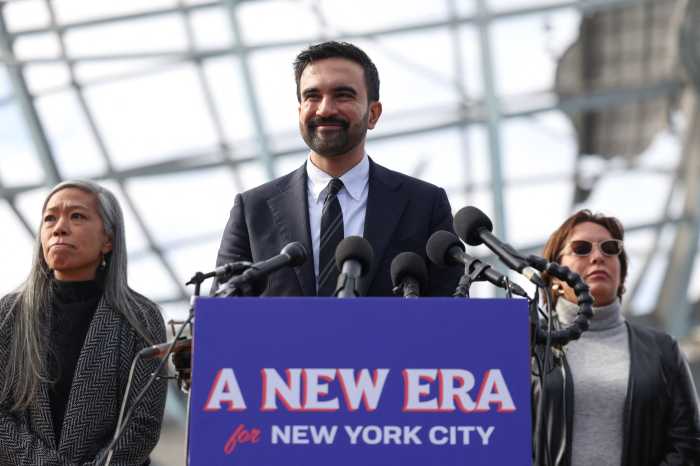BY NATHAN RILEY | Sidewalks in Amsterdam are for parked bicycles and pedestrians.
The pattern resembles a hodge-podge — and city planners in the US might look down on it for that reason — but it is purposeful, a product, in fact, of priorities and careful decisions. And the city — or as much of it as I saw in five days — proves that urban planning can work in ways differently than we think about it.
Chaos is deftly avoided, and cooperation is second nature. I heard more complaints about bicycles being stolen than I did about any clutter their parking created. The city’s famous drug policies are just one example of how Dutch public policy works to harmonize social life.
City’s urban space, public health planners know how to make cooperation work
Pedestrians and bicycles often have an equal share of the sidewalk space, this in a concentrated city center with 17th century roots and very narrow thoroughfares. At the same time, the palpable celebration of history along the canals of central Amsterdam does nothing to impede the embrace of modernity.
Historic preservation is at its apogee in the central district; high property values have not bred skyscrapers. Buildings are often centuries old but still viable with the application of modern engineering and building know-how. And with that, historic land uses are preserved. The ground floor is often used for business, though it is no longer the rule that its owner’s family lives above the shop. This arrangement allows the hawking of up-to-date fashion in historic settings. The small lot sizes are only suitable for small business, a planning objective that promotes a prosperous merchant middle class.
“Shop locally” gains a whole new meaning in Amsterdam. It is the norm in the city center, and consumer activism is touted. A discount store shapes its identity around a “fair deal for all.” Primark advertises “ethical dealing” with vendors comprised of “sustainable businesses.” The disconnect between low prices and ethics that has come to plague American retail is not visible at this store.
And you have to love a city where the anchor tenant at a downtown mall is a clothing store called “Sissy Boy,” which serves a heterogeneous customer base and transforms a taunt into a positive identity.
Our apartment sat in the rear through a narrow alley off Westerstraat, an old avenue in Jordaan, a Greenwich Village-type neighborhood. On the day we left, there was an open-air market with clothes, food, and sundries that even a medieval city dweller would recognize as a marketplace. It filled the center of the avenue while traffic moved on either side. All that seemed missing — thankfully — was the once prevalent smell of layers of horse dung.
I traveled with a friend to celebrate his 50th birthday (he urged me to say 40th, so instead, I’ll just leave out his name) and our first night, we went to the Melkweg to hear INXS play. This is an iconic venue; a former dairy, it opened in 1970, when, according to its website carefully using the past tense, Amsterdam was like “San Francisco.” The place was famous for its hash and music, the Grateful Dead giving a splendid concert there in ‘72.
This history shines a light on the remarkable transformation in the Netherlands, showing that sobriety and tolerance for drug use may walk hand-in hand.
Like New York City, bars in Holland card young people — though, of course, there 18 is the drinking age. There was no smoking of anything at the Melkweg — and none of the sneaky puffing that goes on here. Marijuana use is on the rise in the States, but it’s declining in the city famous for its tolerance.
After the show, we went to a nearby coffeehouse — they are everywhere in central Amsterdam — and it was one of the most delightful experiences of my last 20 years: marijuana use without apologies. With no recourse required to medical needs, the coffeehouse is simply a bar with smoking. Someone who smokes may continue their conversation with friends without having to drag them outdoors. The coffeehouses fill a void created by the ban on indoor smoking in other establishments.
A young man, on what looked liked a first date, was carefully and with great artistry rolling a joint. His companion was guarded; she watched without participating. A couple behind us speaking Italian were hugging and kissing. Across the way, four people socialized even while divided by gender, with the women sharing one joint and the men another. The easy conviviality of getting high is preserved in a civilized setting like this, and that is a vital aspect of the experience.
The coffeehouse puts the smoking outside the view of the general public, but it allows guests with a shared interest to enjoy themselves, watch, and learn. Freedom of association out in the open — who’d a thunk? The setting puts a premium on controlled use. Getting drunk or out of control brings frowns of disapproval in most of the city, the honky-tonk neighborhood excluded. (This loud and raucous neighborhood should not be confused with the red light district for heterosexuals who want a quickie with a prostitute.) The attitudes toward drinking, getting high, and sobriety in New York City and Amsterdam are remarkably similar, but the way social life is organized in the Netherlands offers a safe space for cannabis users.
These are the sorts of delineations of public space that are at the heart of Amsterdam’s social contract. Holland’s ability to create relaxed and happy atmospheres such as the one we found in the coffeehouse provided a stark contrast and welcome relief from the moralizing and fearful stories that constitute the unhappy core of too many public health efforts in the US.
People walk and ride bikes, and city residents, the gray-haired and the young alike, cohabit with taxis and automobiles. Interestingly, almost no one wears helmets while biking — one less thing to carry around.
Amsterdam’s planners seemed to have found the sweet spot where design matches actual behavior and the environment allows everyone to interact easily. Cooperation actually works there.
On our return to New York, the driver who picked us up at the airport said he lived in Amsterdam for seven years. “I had a good job,” he explained. Asked why he left, he said of that decision, “It was stupid.”






























